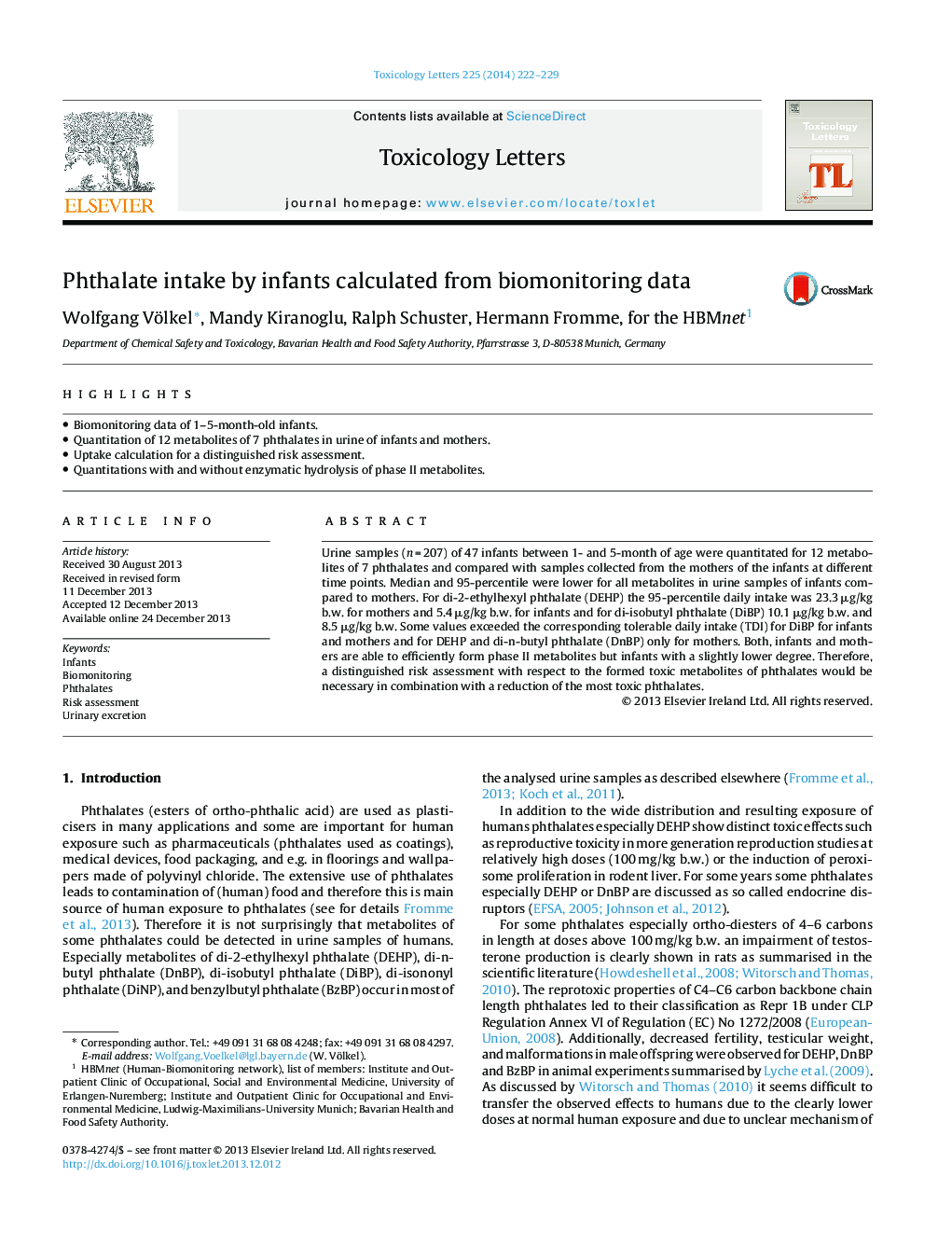| Article ID | Journal | Published Year | Pages | File Type |
|---|---|---|---|---|
| 2599090 | Toxicology Letters | 2014 | 8 Pages |
•Biomonitoring data of 1–5-month-old infants.•Quantitation of 12 metabolites of 7 phthalates in urine of infants and mothers.•Uptake calculation for a distinguished risk assessment.•Quantitations with and without enzymatic hydrolysis of phase II metabolites.
Urine samples (n = 207) of 47 infants between 1- and 5-month of age were quantitated for 12 metabolites of 7 phthalates and compared with samples collected from the mothers of the infants at different time points. Median and 95-percentile were lower for all metabolites in urine samples of infants compared to mothers. For di-2-ethylhexyl phthalate (DEHP) the 95-percentile daily intake was 23.3 μg/kg b.w. for mothers and 5.4 μg/kg b.w. for infants and for di-isobutyl phthalate (DiBP) 10.1 μg/kg b.w. and 8.5 μg/kg b.w. Some values exceeded the corresponding tolerable daily intake (TDI) for DiBP for infants and mothers and for DEHP and di-n-butyl phthalate (DnBP) only for mothers. Both, infants and mothers are able to efficiently form phase II metabolites but infants with a slightly lower degree. Therefore, a distinguished risk assessment with respect to the formed toxic metabolites of phthalates would be necessary in combination with a reduction of the most toxic phthalates.
